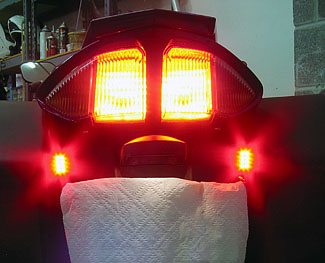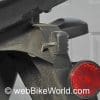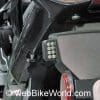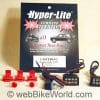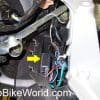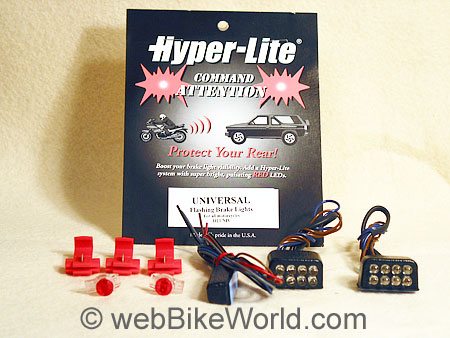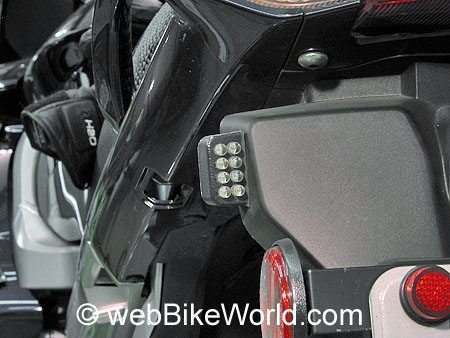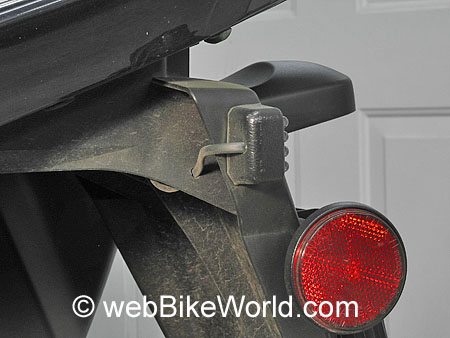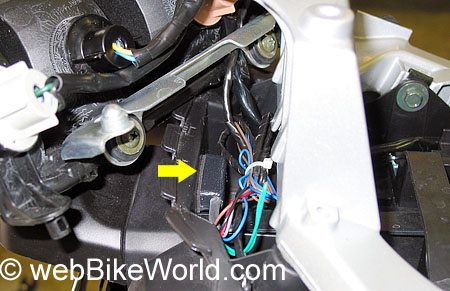Anyone that has spent time on two wheels — either on a bicycle or a motorcycle — knows what a never-ending battle we have as far as our safety is concerned out there on the highways.
Other highway users (i.e., everyone else) seem to have taken the term “multi-tasking” to heart and have even applied it while driving.
This is not exclusive to persons yakking on their cell phones; I’ve witnessed drivers reading newspapers, writing notes, reading a book, putting on make-up, shaving, etc.
You get the idea and I’m sure we could add many more to that list if we were to take a poll.
So here we have a large portion of the drivers on the roadways that are not devoting sufficient attention to the task at hand, which is, first and foremost, driving.
This makes for a rather threatening environment for motorcyclists. And as if that’s not enough, throw in the fact that we are significantly smaller than they are and are easily overlooked. Not to mention the reality of more crowded roadways and shorter tempers….
So what can we do as bikers to make ourselves more visible out there in this harrowing environment? For starters, we can position ourselves in traffic to increase our visibility and we can keep the headlight burning at all times.
Some riders prefer to use a headlight modulator that cycles the headlight back and forth continuously from low to high. How about wearing bright clothing to aid in that visibility? (Check out my review on Olympia’s Neon Yellow AST Jacket if you want to see what I mean about bright clothing and gear).
These are just a few of many methods that can help to make us more obvious to others while in traffic. But what happens when it gets dark? Now that’s when visibility truly becomes critical!
I’ve seen tail lights on some motorcycles that are pitiful in the daytime and are not much better in the dark. It seems some motorcycle designers have succumbed to styling rather than safety. How then are we going to keep from getting run the heck over? It all comes back to that visibility thing.
Even though the tail lights on my new FJR 1300 are comparably large, I feel like a sitting duck sometimes when I’m stopped or moving in slow traffic. The first of two additions I made to help expand that visibility from behind on the FJR was the installation of a pair of Hyper-Lites brake lights.
This was a relatively inexpensive enhancement which could prove to be life saving. I first became acquainted with Hyper-Lites when I returned to riding with the purchase of my first BMW, a beautiful grey and mandarin 2000 K1200RS. The salesman must have noticed the word “sucker” written across my forehead and strongly advised to have a set of Hyper-Lites (along with a few other goodies) installed on my new ride.
Hyper Lites LED Brake Lights
He informed me of how motorists had commented to him on how well the Hyper-Lites stood out on his bike and how quickly the activated LED lights caught their attention. For all I knew he was blowing smoke, but it sounded like a good idea to me at the time.
After riding with the Hyper-Lites on the K-RS, I was convinced of their effectiveness and since have installed them on every bike I’ve owned, including a set on my Unigo trailer I pull behind the “Enterprise”, my ’99 BMW K1200LT.
I went to the Hyper-Lites website and while I was able to find information on their products, I could find very little about the company itself. The sales receipt reads “H&R Enterprises” of Hillsdale, Michigan on the letterhead and this is the same company that made the ones on my first BMW, so apparently they’ve been around for at least six years.
LEDs (Light Emitting Diodes) are commonly used in many applications nowadays since they require far less power to operate, have a longer life, develop little heat and are more durable than a standard incandescent bulb.
They are also easily controlled with micro-circuits which make them great candidates as lights on motorcycles. The use of LEDs as brake lights on automobiles is also becoming more common.
This is because LEDs come up to full brightness instantly (to the human eye) which can result in a quicker braking response by those behind you, therefore providing them with a theoretically greater braking zone and possibly avoiding a rear end collision. We’re only talking about milliseconds, but at high speeds this can translate into a substantial distances.
Hyper-Lites use LEDs exclusively in their products and they have several styles and configurations available, and some are specific to particular motorcycle makes and models. You can choose from two modules with 8 super bright LEDs in each, one 16 LED module or even two 16 LED modules. Now that’s some serious light with only a mere 280 milliamp draw!
Some of their kits can also operate as additional running lights and turn signal lights in addition to functioning as brake lights. They can even customize a set for you.
For those hard to fit bikes they have a tag mount bracket that mounts behind the license plate via the tag screws, extends just beyond it and has a perpendicular end for mounting the LED modules.
Hyper-Lites are really a simple arrangement of one or two LED light modules (depending on the model you choose), a flasher relay, plus all of the necessary wiring and connectors needed for installing them on your bike.
After considering sizes and locations for mounting the LED modules, I decided their Universal Kit with two 8 LED modules would do the trick for my FJR. I opted to place each 8 LED module, measuring 1 3/8” (35mm) X ¾” (20mm) X 15/16” (25mm) fitted with two-sided foam tape, on the side edges of the rear fender just above and to the sides of the license plate, with the lights facing the rear for optimal effect. These babies are BRIGHT!
The wires were simply run around the edge and then up through a small hole I had drilled in the rear fender to gain access to the tail light wiring. Getting the tail light assembly out to more easily make the connections did require some body panel removal. This took no time at all and since it was a rotten weekend, weather-wise, it was the perfect day for this project.
The instructions were straight forward and helpful. On most bikes all that’s needed to wire these lights up is a 12 Volt power supply when the key is on (you can use the tail/tag light circuit since they’re always on when the key is on), a ground and a 12 Volt signal when the brake lights are activated.
All are available right there at the tail light assembly on most motorcycles. Notice for you BMW owners with the ABS Servo brake systems: Hyper-Lites claim their product can be installed on any of these bikes without affecting the speed sensors or braking system, though the connections are made in a different manner.
Once the wiring was accessible, it was a simple matter of identifying which wires were what by looking at which bulbs were on when, and then confirming the wires with a test light. For the actual connections into the circuits I used the supplied Scotch Loc connectors.
The wires to the lights were joined along with the wires to the flasher with 2 unusual splices that required you to simply insert the 3 wires, each in their own port, and then press the connector together. This provided a secure and watertight connection; just be sure the wires really do go all of the way into the connector so the shorting lug actually makes contact with the wire (don’t ask how I know this!).
Of course the wires can be soldered and/or shrink-wrapped if desired. The flasher relay is so small it can be tucked away just about anywhere along with the additional length of wiring.
There is a choice of two operating modes for the Hyper-Lites. One will cause the lights to flash continuously whenever the brake lights are activated, the mode I prefer. The other mode causes the lights to flash for five seconds, then stay solid. The Hyper-Lites come set up for the continued flash mode, but to switch it over requires only snipping a certain wire. Installation complete!
Conclusion
Installation of a set of Hyper-Lites is fairly simple task, they are reasonably priced and may very well save your rear end (i.e. someone running into you from the rear.)
The lights are a real eye catcher when operating, which may be just what’s needed to get the attention of some of the lunk-heads out there behind the wheel. Collisions from the rear account for a very small percentage of motorcycle accidents, but even once is one too many when it happens to you.
Prices starting at $59.95 for the Universal 2-8 LED Module Kit.
| wBW Review: Hyper Lites Motorcycle LED Brake Lights | |
|---|---|
| Available From: Hyper Lites | Suggested Retail Price: $43.00 – $65.95 |
| Colors: Red (brake- or tail-lights) | Made In: U.S.A. |
| More: Motorcycle Lighting Reviews | wBW Radiantz LED Brake Light Bulb Review | |
Owner Comments and Feedback
See details on submitting comments.
From “B.H.” (05/11): “Based on your review of the Hyperlites, I bought a set of flashing 3-way’s. I bought them to be more easily seen but they have a great benefit….People do not ride my butt any more and this is before hitting the brake to activate the flashing brake lights. They just do not get close and when you do activate the flashing brake lights, they back off even further or even change lanes.
This very unexpected benefit is the best part of the whole experience so far and they will always have my business and that of my friends. Superior product wins every time!”
From “C.P.”: “I just read your review of the HyperLites on the FJR. I’ve been using HyperLites on my ’87 FJ1200 for about 5 years now and I would recommend them to every rider. I ride almost daily into DC for my commute, leaving before sun-up.
I first saw HyperLites on a couple of BMWs at an MSF Advanced Riders Course. After riding behind them in the class, I was sold. When I ordered them, one unit had a manufacturing flaw, which the company quickly replaced at no cost. When I called about it, I ended up talking to the owner, a fellow rider, for at least 30 minutes. Great service and personable customer relations.
I use the license plate mounting bracket and installed them without a hitch. I will say that they are very noticeable and drivers tend to back off my tail when I’m braking. I use the flash for 5 seconds then steady mode, but I just release and re-apply the brake if I think the following car missed the message.”


